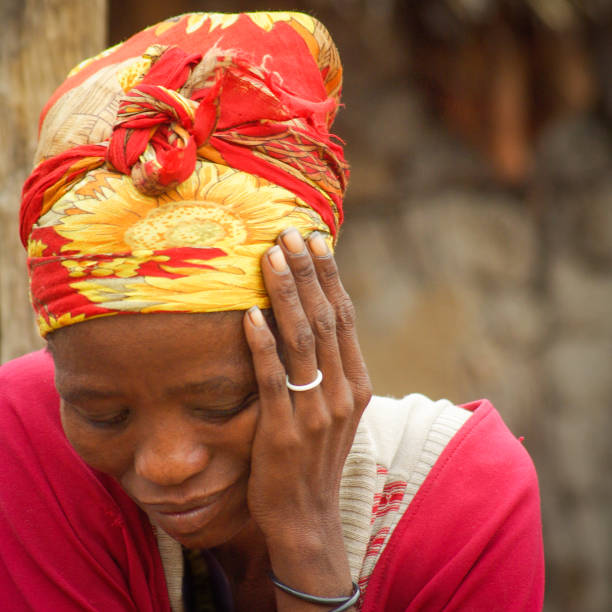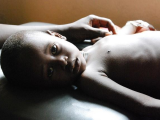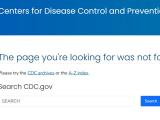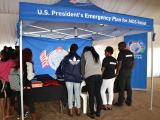The Trump administration's executive order to suspend funds intended to prevent and treat HIV in sub-Saharan Africa (SSA) will result in 60,000 to 74,000 excess deaths over the next 5 years—and possibly many more—a mathematical modeling study published late last week in eClinicalMedicine forecasts.
On January 24, 2025, the US government froze all foreign aid programs, including the President's Emergency Plan for AIDS Relief (PEPFAR), for 90 days. The study authors, from Europe, Africa, and the United States, noted that a limited waiver to exempt PEPFAR programs that deliver life-saving HIV care and treatment and work to prevent mother-to-child transmission became available in February but that it hasn't been implemented completely.
"Reports from African treatment programs, however, show that the possibility of obtaining a waiver has not yet resulted in treatment activities restarting in many cases, because of waiver application and implementation delays and organizational, administrative, and logistic constraints to restarting programs after they obtained a waiver," they wrote.
In addition, the PEPFAR freeze has now extended beyond 30 days, with no signal from the Trump administration that funding will resume.
To estimate the impact of funding cut, the researchers modeled the effect of these policy changes on HIV deaths and new infections from 2025 to 2030 in Ethiopia, Kenya, Malawi, South Africa, Tanzania, Zambia, and Zimbabwe, which together account for roughly half of all HIV patients in SSA. They also accounted for time lags in seeing the true impact of stopping and restarting treatment.
Antiretroviral therapy slashes HIV deaths
The team predicted changes in HIV deaths and new infections under four scenarios: (1) Executive order–proportional, in which treatment disruptions were proportional to the country-specific share of total PEPFAR HIV funding; (2) Executive order–realistic, which assumes near-total system collapse due to program dependencies; and (3 and (4) Waiver scenarios in which treatment restarts after 4 or 8 weeks, respectively.
In little over 20 years, the number of people receiving life-saving ART in SSA has increased from nearly zero in the early 2000s to about 21 million in 2023.
"Over the past two decades, PEPFAR has been essential to the success of the rapid worldwide scale-up of antiretroviral therapy (ART) for HIV, especially in sub-Saharan Africa (SSA), the epicenter of the HIV pandemic," the investigators wrote. "In little over 20 years, the number of people receiving life-saving ART in SSA has increased from nearly zero in the early 2000s to about 21 million in 2023."
As a result, HIV/AIDS–related mortality has fallen from roughly 2.2 million deaths in 2003 to 390,000. And because ART substantially lessens HIV patient infectiousness, the scale-up also contributed to a drop in new HIV infections, from 3.2 million in 2003 to 640,000 in 2023, the study authors noted.
Deaths potentially much higher than estimated
A 90-day funding freeze would result in 60,000 (95% uncertainty interval [UI], 49,000 to 71,000] excess HIV deaths under the Executive order–proportional scenario. This figure would climb to 74,000 excess HIV deaths (95% UI, 63,000 to 89,000) for the Executive order–realistic scenario.
"For the continent as a whole, the number of excess HIV deaths will be substantially higher because our study only covers about half of the total population living with HIV in Africa," the authors wrote.
Under the 4- and 8-week waiver scenarios, predicted excess HIV deaths ranged from 21,000 (95% UI, 15,000 to 28,000) to 28,000 (95% UI, 22,000 to 36,000), respectively. Excess new infections ranged from 35,000 to 103,000 for 4 and 8 weeks, respectively.
Call for rapid, full re-instatement of PEPFAR
"First and foremost, the devastating impacts identified in our study call for a rapidly [sic] and full re-instatement of PEPFAR, one of the most successful health programs in the history of public health," the authors wrote.
Global partnerships should rapidly mobilize to develop and deploy mitigation strategies to prepare for a partial or full retreat of the United States from the global HIV response.
"Second, global partnerships should rapidly mobilize to develop and deploy mitigation strategies to prepare for a partial or full retreat of the United States from the global HIV response."
"Third, local research and implementation programs should provide empirical evidence through measuring treatment defaults and HIV deaths in the coming months and years, and should work on implementing HIV treatment program innovations which can mitigate future, long-term funding reductions," they added.





















